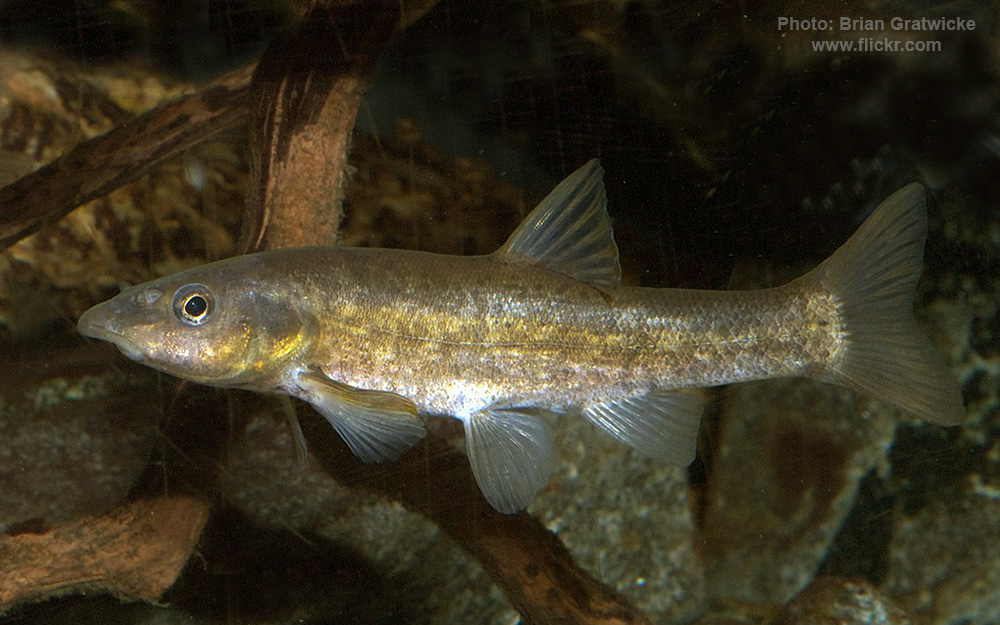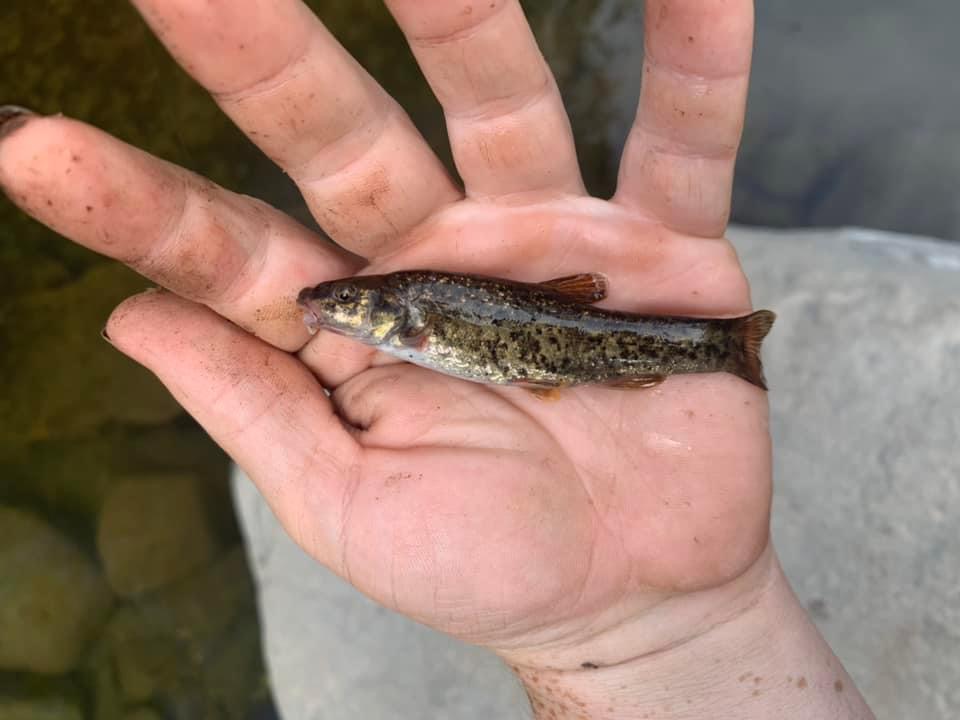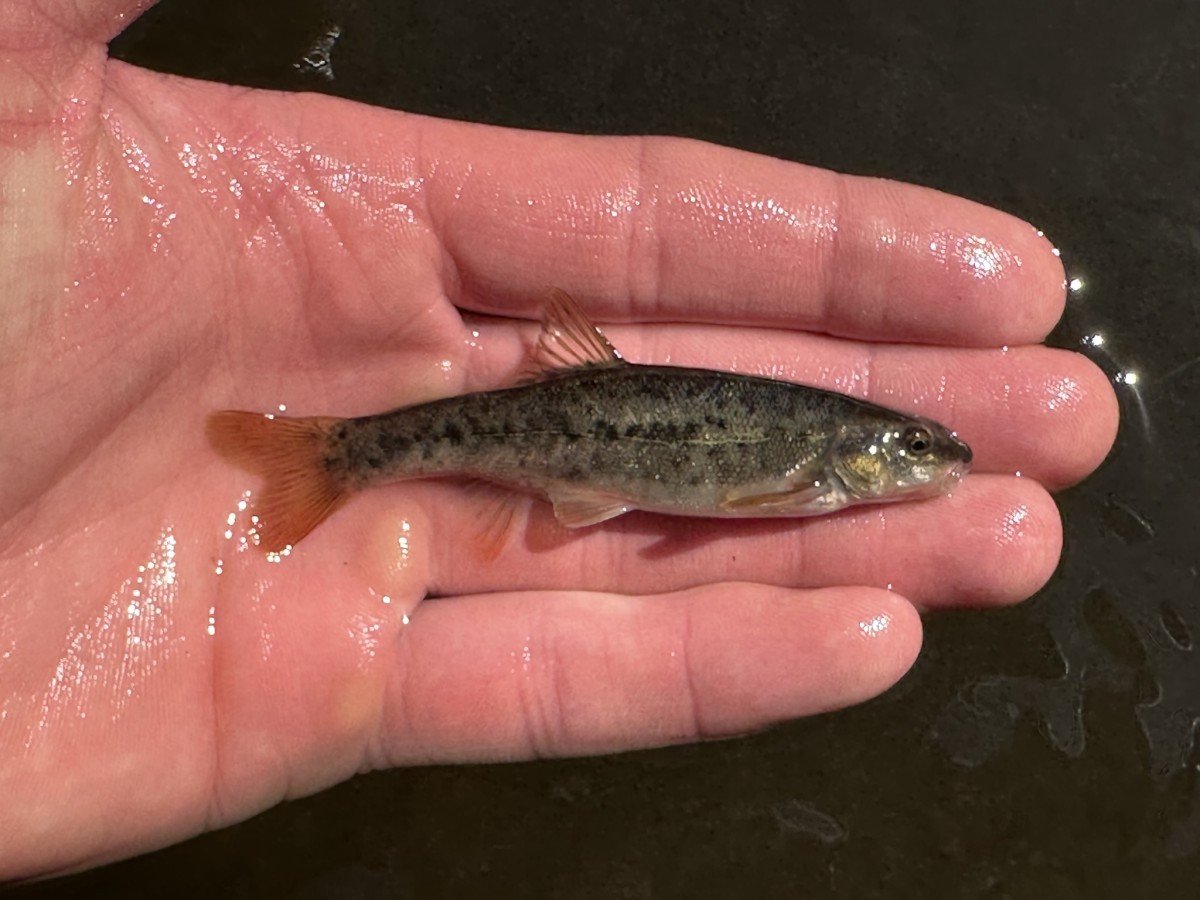Speckled dace
(Rhinichthys osculus)

Classification
General data
The speckled dace (Rhinichthys osculus), also known as the spotted dace and the carpita pinta, is a member of the minnow family. It is found in temperate freshwater in North America, from Sonora, Mexico to British Columbia, Canada.
Canada is the northern limit of its distribution, and there it is found only in isolated parts of the Kettle and Granby Rivers. It is possible that, along with the Salish sucker (Catostomus sp.), the speckled dace was one of the first fish to recolonize the rivers of British Columbia following the Ice Age. It is believed that spawning in Canada occurs once a year during the summer in fish older than two years. During breeding, many males often accompany a single female who broadcasts adhesive eggs over the gravelly stream bed. Each female produces between 200 and 500 eggs. Speckled dace are omnivorous, feeding upon filamentous algae and other plant material, bottom-dwelling aquatic insects and zooplankton.
The speckled dace is about 4 to 5 inches (10 to 13 cm) long.
Canadian populations of the fish were last sampled in 1977, and then only 400 individuals were collected. Few of the fish caught were adults, suggesting that speckled dace mortality may be high. However, not enough data is available to determine accurately whether the population is self-sustaining or in decline. In Canada, the speckled dace is threatened by its limited habitat and by seasonal flooding.













